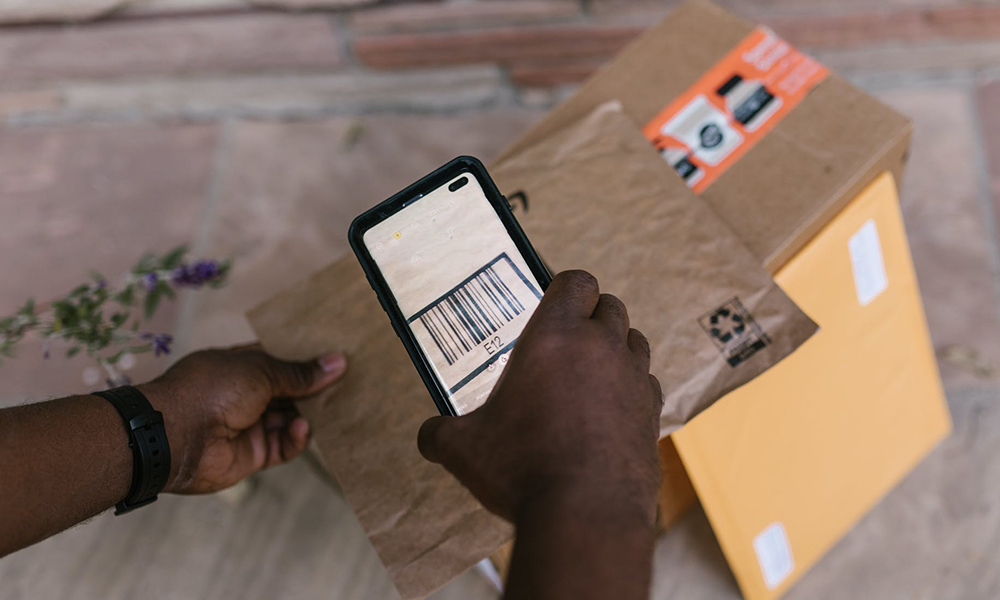
Complete Barcode Solution: Detailed Guide
Barcodes and barcode scanners are an essential part of our daily lives and the success of any high-performing business. Scanning systems are used in many different industries, including healthcare, manufacturing, travel, retail, grocery, and government. Barcodes have helped businesses become more efficient by allowing them to track and store information about millions of items. So it is important to choose the right Barcode Solution for your business needs.
What Are 1D & 2D Barcodes?
Typically, a single 1D barcode line contains 8–25 characters of text information. When you see multiple layers of bars and spaces, this is known as stacking, and it allows the user to go beyond the limit of 25 characters. Many businesses have decided on 8–15 characters to keep the barcode at a respectable and printable size.
A 2D barcode can encode alphanumeric data as well as images, website addresses, voice, and other binary data. You can use the data whether or not you are connected to a database.
What Are Barcode Scanners & Printers?
Barcode Scanners
When you think of barcode scanners, you imagine a small device that can help you in reading the lines on a label, but the mechanism is more complex. These are tools that are specifically designed to capture not only the image of a barcode but also to decode the information and transmit it to a computer. Depending on the scanner model, this transmission is sent via wired or wireless connections.
To put it another way, a barcode scanner enters data in the same way that a keyboard does, but much faster. Rather than typing the number, which leaves room for human error, the scanner simply adds data to a database or your business application.
Barcode Printers
Types of barcode printer -
Barcode printers are classified into four types: desktop printer, industrial printer, mobile printer, and specialised printer. The best option for you will be determined by your average print volume, mobility needs, and type of printing.
Desktop Printers –
Desktop barcode printers can produce 100 to 500 labels per day, making them ideal for use in offices and retail stores.
Industrial Printers –
Industrial barcode printers have a higher capacity than desktop printers and can print 1,500, 3,000, or even 5,000 labels per day, depending on the model. Some printers can also print larger labels that are up to 8 inches wide. These barcode printers are beneficial to manufacturing and distribution facilities, as well as large retailers.
Mobile Printers –
Mobile printers provide comparable output to desktop printers but do not require a physical connection to a computer; print widths are typically limited to no more than 4 inches. Mobile printers are especially useful for creating labels.
Standard Printers –
Although standard printers can usually print specialised labels such as tickets, wristbands, and cards, if you only need another type of label, a specialised barcode printer is a more cost-effective and efficient option.
Different Printing Methods
Direct Thermal - Heat from the machine creates the image on the labels in direct thermal printers. These models have a number of advantages, including their simplicity, lack of a ribbon, and ability to generate clear barcodes for easy scanning. Direct thermal printers are only suitable for labels that will be in use for no more than six months due to the temporary nature of the barcode image.
Thermal Transfer - Heat transfers an image from the printer ribbon to a label in these printers. In average warehouse conditions, barcodes can last up to 20 years and can withstand extreme temperatures. Thermal transfer printers can also print barcodes on a variety of materials, such as polypropylene and polyester, and in a variety of colors. Because thermal transfer printers are more expensive than direct thermal models, you should select this option only if you require additional printing capabilities.
Barcode Solutions For Various Industries
Retail Industry:
Point-of-sale transactions, marketing/customer loyalty programs, inventory, warehouse operations, transportation, and more.
Healthcare Industry:
Patient admissions, bedside medication verification, lab specimen tracking, shipping and receiving, document and record tracking, and staff communication.
Manufacturing Industry:
Inventory management, work in progress, asset tracking, shipping and receiving, and compliance labelling are all areas where manufacturing is used.
Transportation And Logistics:
Picking, put-away, stock replenishment, shipping, and receiving are just a few of the workflow functions that warehouse distribution can automate and optimize.
Cross-docking, fleet management, and pick-up and delivery operations are all examples of transportation and logistics that can help track every item throughout the supply chain.
Groceries Industry:
Groceries for point-of-sale transactions and inventory, as well as warehouse and transportation operations.
Food Processing Industry:
From the manufacturing floor to packaging and distribution, food processing is a complex process. For food safety, the industry's track and trace requirements are constantly increasing. Companies in the food industry must be able to prove when, where, and by whom produce was received, processed, stored, transported, consumed, and disposed of by identifying when, where, and by whom it was received, processed, stored, transported, consumed, and disposed of.
Field Service Applications:
Take readings for utility companies, conduct building, machinery, and vending machine inspections, capture and transmit electronic signatures, manage inventory, and more with field service applications.
Education:
Asset tracking, attendance, registration, document and record tracking, and staff communication are all covered by education.
Postal And Parcel Delivery Services:
Postal and parcel delivery services scan all barcoded mail pieces (flats, letters, and packages) that enter the mail stream and track those items up to the point of delivery with additional scans. The accuracy of scanning is essential to the success of real-time visibility.
Ecommerce:
Ecommerce is used for order fulfilment, marketing, packing/shipping, transportation, inventory, warehouse operations, and other purposes.
Military:
Military equipment and supply tracking, ID management, supply chain and logistics, commissary management, maintenance and repair, and other purposes.
